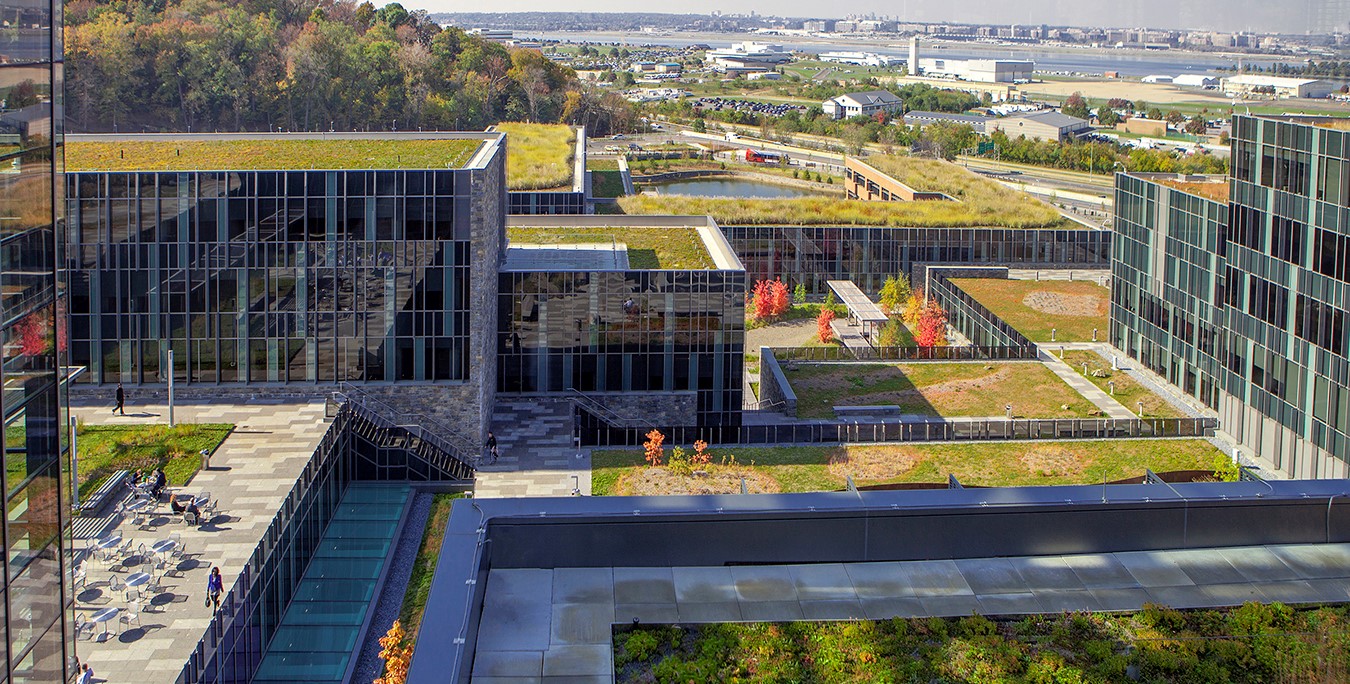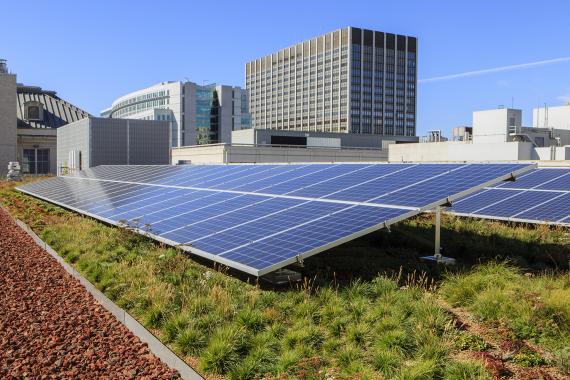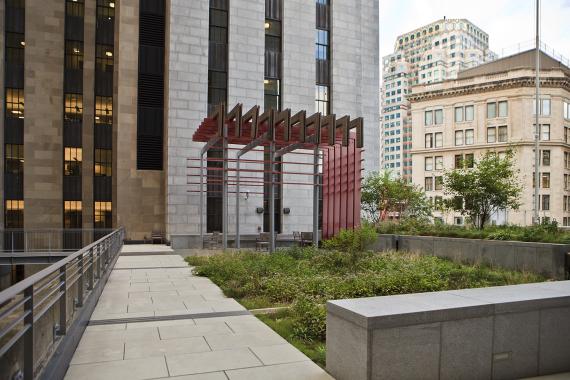
The ROI for green roofs provides more than a pretty view
Green roofs seem futuristic, like gardens and oases spread out over building tops that before were shimmering with heat.
A federal agency like the U.S. General Services Administration might seem like an unlikely innovator in that scenario. But if you had to guess, would you say the federal agency that manages and leases more than 8,600 buildings nationwide has had green roofs for 20 years? 30?
While green roofs multiplied after the first Earth Day celebration in April 1970, reset your guesstimate about how far back the agency has been planting on its rooftops: GSA’s first green roof was installed in 1932 on the rooftop of the IRS building in Washington, D.C.
Today, GSA has over 80 buildings equipped with green roofs, spanning approximately 2.2 million square feet. That’s about 50 acres – or 48 football fields – of green roofs, including what is believed to be the second-largest planted roof in the U.S. and third-largest in the world: the U.S. Coast Guard Headquarters (USCGH) in Washington (pictured above).
On the USCGH roof alone, that’s almost as much as 10 football fields.
“Any time I speak in public or talk to people about the work GSA does, people come up to me and say, ‘I had no idea. I’m so proud to know that our tax dollars are being invested this way,’” says Lance Davis, GSA’s sustainability architect for 18 years. “I think it’s really powerful, this story.”
The USCGH green roof, installed in 2013, was designed “to blend into the hillside which forms a portion of the sloping fringe of greenery or ‘green bowl’ around the city. This design gives the occupants an advantage of views of the Potomac River, downtown Washington, as well as views of the various courtyards of the building.”
Green roofs offer more than greenery, pretty views

Green roofs reduce polluted stormwater that runs into local bodies of water; lessen energy use and costs in the buildings they top off; and reduce urban heat islands, or pockets of concrete and asphalt that absorb heat and radiation from the sun. They can support energy producing solar panels that are more efficient when cooled by the green roof ecosystem.
Other advantages include extending the longevity of the roof and aesthetics.
In fact, most of the costs of green roofs, according to a GSA cost-benefit analysis, are related to installation and maintenance. Notably, they are expected to last twice as long as conventional roofs.
A green roof that GSA studied paid for itself in about six years with a 224% return on investment with its extended life, storm water benefits, and energy savings.
Of the size of GSA’s green roof footprint, Davis says, “it is just beyond belief as an owner to have that much square footage. I don’t know if we can validate it, but I think we’re the largest planted roof owner in the world. It wouldn’t be surprising,” he says.
To keep track, Davis and his colleagues devised a Green Roof Tracker that lists every federal building managed by GSA since 1932 that has or had a green roof installed.
Help planning your green roof
For engineers considering a green roof, GSA created a Sustainable Facilities Tool (SFTool.gov), which helps map out the advantages of a planted roof and the engineering aspects to consider.
As the site says, planted roofs - also known as vegetated roofs or eco-roofs - use plants as a technology to help bring the natural cooling, water-treatment and air filtration properties of vegetated landscapes to the urban environment.
The questions a building engineer needs to answer before having a green roof involve:
- Ensuring a building can structurally support a green roof.
- Preventing leaks.
- Avoiding plant loss and other problems.
- Installing green roofs on historic buildings.
Planted roofs are not all seagrass and daisies. They are complex ecosystems that are expertly orchestrated and designed. Details are important. Gardeners will appreciate that GSA’s guidance for engineers considering a green roof includes gardening zones that direct which plant species are suitable for a building’s location. Vegetation on a green roof in the U.S. South will look different from plants on a roof in the U.S. Northeast.
Vegetation, soil, and a waterproofing membrane over a traditional roof are the groundwork of the green roof, according to SFTool.gov, which offers diagrams, drawings, and architectural calculations to explore lighting, HVAC, water, solid waste, human behavior, and more.
“Extensive planted roofs consist of small succulent plants, while intensive planted roofs have greater plant diversity, including native vegetation, bushes, or trees,” according to the SFTool site.
Creative ways green roofs are used today
GSA studied more than how to build a successful green roof. It looked into how the roofs were used, too.
“The study showed a tremendous amount of people going up and out instead of using conference rooms and meeting rooms,” Davis explains. “They were going out and having their meetings on the roof. So if it’s designed appropriately, it can become a usable space for the building.”
The roofs have attracted other tenants, as well, Davis says enthusiastically.
“The latest thing that just happened is we have some new non-paying tenants on our roof,” he joked.
Pollinators. GSA installed hives and brought in bees.
“We’re always looking for opportunities to establish a living system on the roof,” Davis says, “especially as we look at net-zero energy water and waste, which is one of those priorities that we have within the agency.”
New meaning for a “planted” roof

Davis says entrepreneurs have asked GSA about renting their roofs for commercial growers. There are many logistics that would need to be worked out, but “that might be an interesting design opportunity,” he says. “GSA roofs to grow vegetables.”
Green roofs can be an amenity like a coffee shop or a gym that would be accessible to employees who report to an outfitted building.
“That’s becoming one of those things that employees are coming to expect, certainly within DC, Chicago, and Boston areas where there are lots of planted roofs,” Davis says. “That’s one of those amenities that people really want.”
Davis says GSA is excited about the potential of planted roofs and how they can benefit the building and the mission of their tenants. As more buildings come on line or are renovated, the agency will look to deliver the best customer experience, even on the roof.
Want to know more about what we’re doing to tackle climate change? Read the Earth Day “snapshot” of GSA’s recent sustainability progress.

 U.S. General Services Administration
U.S. General Services Administration
